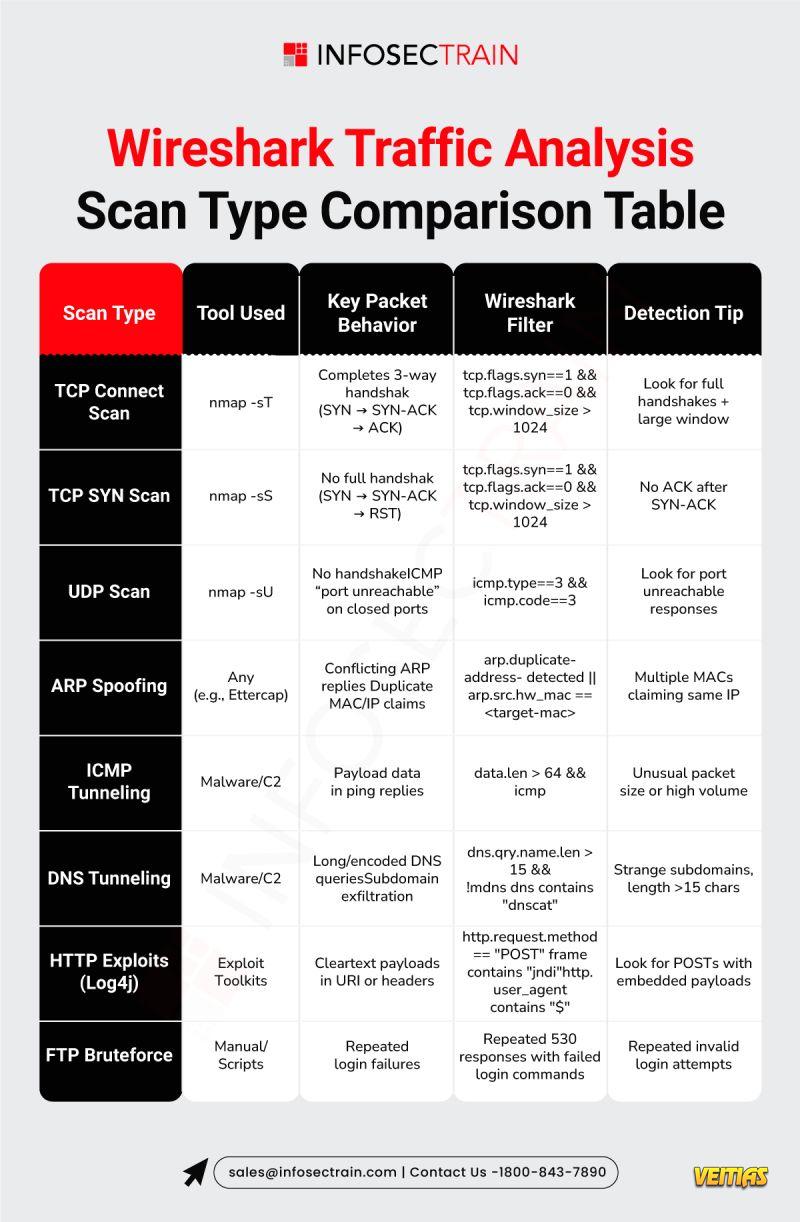DNS Flood Attack vs. DDoS
Not all cyberattacks are created equal—understanding the difference between DNS flood attacks and DDoS attacks is crucial for defense:
DNS Flood Attacks → Overload DNS servers with massive requests (often UDP-based).
DDoS Attacks → Target ANY part of the infrastructure using botnets to flood with traffic.
Key Differences:
✔ Traffic Type
✔ Goals
✔ Mitigation Strategies
🛡 Defense Tactics:
DNS filtering
Rate limiting
DDoS protection services
Read Here: https://infosec-train.blogspot.com/2025/08/dns-flood-attack-vs-ddos.html
#DNS #DDoS #CyberSecurity #CyberAttacks #NetworkSecurity #InfoSec #CompTIASecurityPlus #CEH #HackingPrevention #CyberAwareness #ThreatIntelligence #InfosecTrain #ITSecurity #EthicalHacking #DDoSProtection
Not all cyberattacks are created equal—understanding the difference between DNS flood attacks and DDoS attacks is crucial for defense:
DNS Flood Attacks → Overload DNS servers with massive requests (often UDP-based).
DDoS Attacks → Target ANY part of the infrastructure using botnets to flood with traffic.
Key Differences:
✔ Traffic Type
✔ Goals
✔ Mitigation Strategies
🛡 Defense Tactics:
DNS filtering
Rate limiting
DDoS protection services
Read Here: https://infosec-train.blogspot.com/2025/08/dns-flood-attack-vs-ddos.html
#DNS #DDoS #CyberSecurity #CyberAttacks #NetworkSecurity #InfoSec #CompTIASecurityPlus #CEH #HackingPrevention #CyberAwareness #ThreatIntelligence #InfosecTrain #ITSecurity #EthicalHacking #DDoSProtection
DNS Flood Attack vs. DDoS
Not all cyberattacks are created equal—understanding the difference between DNS flood attacks and DDoS attacks is crucial for defense:
🔹 DNS Flood Attacks → Overload DNS servers with massive requests (often UDP-based).
🔹 DDoS Attacks → Target ANY part of the infrastructure using botnets to flood with traffic.
💥 Key Differences:
✔ Traffic Type
✔ Goals
✔ Mitigation Strategies
🛡 Defense Tactics:
👉 DNS filtering
👉 Rate limiting
👉 DDoS protection services
Read Here: https://infosec-train.blogspot.com/2025/08/dns-flood-attack-vs-ddos.html
#DNS #DDoS #CyberSecurity #CyberAttacks #NetworkSecurity #InfoSec #CompTIASecurityPlus #CEH #HackingPrevention #CyberAwareness #ThreatIntelligence #InfosecTrain #ITSecurity #EthicalHacking #DDoSProtection
0 Комментарии
0 Поделились
4438 Просмотры
0 предпросмотр







